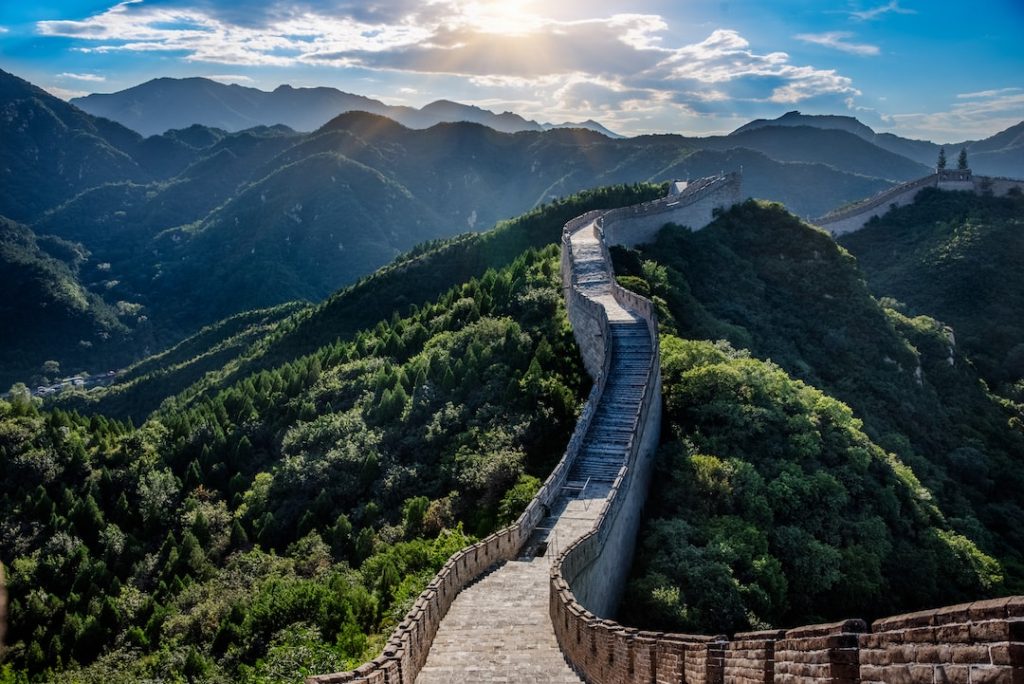
People are always talking about how the world is going to end, and it’s true that many of the places you read about in this article have been disappearing.
But if you can make it your mission to see these places before they’re gone, then you’ll be able to live with a little more peace of mind. And who knows? Maybe by visiting them, we can put pressure on governments and companies to protect them better.
This article includes 11 places that are all globally significant and worth seeing before they disappear or are gone forever.
1. The Great Barrier Reef
The Great Barrier Reef is the largest coral reef in the world, and it is located off the coast of Queensland, Australia. It is so big that if we’re to be seen from outer space, it would be the largest structure on Earth. It exists because of a shallow ocean water temperature which allows coral polyps to build massive reef structures.
By 2050, there is a chance that all of the coral in this incredible ecosystem will be dead due to global warming’s effect on our oceans. The Great Barrier Reef could still very well survive if we take steps now to protect it. There are many ways people can get involved with helping preserve this beautiful site, including working with your local government or through online petitions.
2. The Amazon Rainforest
The Amazon Rainforest is home to over 3,000 species of trees and more than 400 types of mammals. It is the largest rainforest in the world. It is also a vital part of our planet’s climate, as it produces 20% of the oxygen in Earth’s atmosphere.
Due to deforestation and forest fires, over 11 million acres (about 44,000 square miles) of the Amazon have been destroyed since 1995. This means that there are barely any trees left standing between Brazil and Peru. Another reason why this area may soon disappear is that poorer people are cutting down forests for farmland or land on which to build homes. Much more must be done to preserve this beautiful ecosystem before it disappears forever.
3. The Dead Sea
The Dead Sea is located between Israel and Jordan, just south of Jerusalem. It used to be a giant lake, but over the years, people have cut down trees in the region to build homes and use them as fuel. This has led to soil erosion, which is why it has gotten so low. When you visit this place now, you will see that in some areas of the sea, you won’t even be able to swim.
The Dead Sea is considered “dead” because there are no fish or plants living in it due to its high salinity. In fact, you can float easily on top of it because of how dense saltwater is compared to freshwater. If nothing is done soon, however, we may lose this incredible sight forever. Luckily, when Israel was created in 1948, laws were put into place to protect the forests there. The country has planted over a billion trees and stopped using the Dead Sea’s water for its own use, which is helping it to replenish.
4. Manatee Springs
Manatee Springs is located in Florida. This freshwater spring used to be a popular swimming hole, but since it was discovered by humans in 1823, people have been coming here to swim regularly. People have not only altered this area by polluting the water so that algae no longer grows, but they’ve also decreased the amount of food available for manatees —the sea animals who come here every winter to eat plants that grow underwater during colder months—and cut down many of these plants along with some nearby trees. With a lack of food, many manatees have been forced to swim to other springs just to find something they can eat, and that’s taking them away from this natural habitat.
5. The Great Wall of China
The Great Wall is a series of protective stone and earthen walls which were built thousands of years ago in northern China. It stretches for nearly 3,000 miles, and it was built so that the Mongolians would not be able to invade China during their expansion period. However, the Chinese did not build it all at once; it took over two hundred years to create the entire thing.
While portions of this historical landmark are now protected as national parks or on UNESCO’s World Heritage List, much more of it has been severely damaged by irresponsible tourism and the weather. Some portions are being rebuilt, but much more work needs to be done. At this point, the entire wall has become iconic, which means that many people have come here to see it or even use parts of it for profit without making any improvements. This includes scaling parts of the wall and taking pictures as if they were climbing a mountain or doing some other adventure sport.
6. Mount Kilimanjaro
Kilimanjaro is located in Africa right near Kenya’s border. It used to be covered with ice fields and glaciers (and it still is at its peak), but now, due to climate change, most of its ice has melted. If it continues to get warmer and the glaciers continue to melt, the entire mountain will be gone by 2100. Climbing this mountain used to be a major goal for many people around the world who wanted to say that they had climbed “Kili,” but we wish more had been done to preserve this natural wonder before it disappears.
The mountain has also been a popular destination for hikers and climbers from around the world. Climbing this mountain used to be a major goal for many people who wanted to say that they had climbed “Kili.” It’s sad to think that it has already begun melting and we haven’t done anything about it, but you can’t deny that there is still plenty of beauty there.
7. Madagascar
Madagascar has some of the most unique animals on Earth, including lemurs, chameleons, and giant jumping spiders. The country has taken some steps to preserve this biodiversity in places like the Marojejy National Park and the Ankarana Reserve, but there are still a lot of animals that are endangered here. Some have already gone extinct because of human actions, and we need to do more so that we don’t lose any else.
Madagascar is an island off Africa’s southeastern coast, which makes it very vulnerable to climate change. It’s also part of the Ring of Fire, which means it’s at risk for earthquakes, tsunamis, and volcanoes. However, its beautiful beaches and wildlife make it a popular tourist destination. Sadly, irresponsible tourism has contributed to environmental destruction such as deforestation and pollution along with man-made disasters such as illegal logging and fishing, which are more likely to happen when a country lacks stronger laws in order to protect its natural resources.
8. Australia’s Great Barrier Reef
This is another one of the Seven Wonders of the World, and Australia does not want to lose it. It’s one of the most iconic landmarks in this country as well as a major tourist attraction with over 2 million visitors per year, but now there are concerns that it will soon disappear for good.
The Great Barrier Reef is actually the world’s largest reef system, with a total of 3,000 reefs and 900 islands. However, it is facing massive coral bleaching because of climate change, which is when corals are very stressed out by water temperatures that are too warm or other environmental stresses (like pollution). These stressed-out corals expel their algae but no longer produce as much income to keep themselves alive. They turn completely white from this process.
Even if we’re able to save the Great Barrier Reef in time from something like coral bleaching, the tourism industry could cause it to disappear forever. The whole ecosystem here can be negatively affected by irresponsible tourism such as overcrowding and littering as well as boat traffic interfering with spawning activity.
9. The Galapagos Islands
The Galapagos Islands are a small archipelago off Ecuador with many rare plant and animal species found nowhere else in the world, which makes it an ideal place for scientific study as well as eco-tourism. However, increased tourism to the islands has caused some trouble for the fragile ecosystem there.
One way that such irresponsible tourism can affect these islands is by introducing invasive species and harming the native species through things like pollution and direct actions (like kicking over nests). This can damage habitats, scare animals away, lead to a decrease in the population size of certain species, and even cause the extinction of entire species.
10. The Great Ocean Road
This scenic road was built along Australia’s south coast on what used to be a tiny fishing town called Torquay back in 1913. It’s one of the best places in this country for fishermen looking to catch squid, surfers trying to ride the waves, hitchhikers looking for a lift, and tourists who want to admire the natural beauty in this area.
The Great Ocean Road is at risk from storms and erosion caused by climate change as well as pollution from runoff water. This is because many areas here aren’t protected by any kind of buffer zone such as sand dunes.
This beautiful stretch of road has already suffered some damage thanks to increased traffic on it over the years. Authorities are now working hard to prevent further damage from happening so that we can enjoy its beauty well into the future.
11. The Royal National Park
This national park on Sydney’s south coast has been a popular place for rugged hikes and nature walks since the 1800s, as well as being home to a wide variety of animals including koalas, kangaroos, wombats, lizards, birds, and snakes. However, it is now in danger because the land here is slowly sinking due to natural geological factors such as erosion and tectonic movement (which is when parts of the Earth move around).
When this happens over thousands of years or even millions of years, it can be considered normal. However, with rising sea levels caused by climate change along with rapid urban development in this area reducing its size further (“footprint” areas), the Royal National Park will soon be gone forever.
Final Thoughts
It’s always sad to see places that we love disappear. But there are things you can do to prevent this, such as visiting these 11 Places before they Disappear and making sustainable choices like recycling or using less water in your home.
If you’re interested in helping protect the environment for future generations, consider taking action by volunteering with organizations like World Wildlife Fund or Greenpeace. We all have a responsibility to do our part in reducing carbon emissions and fighting climate change.
